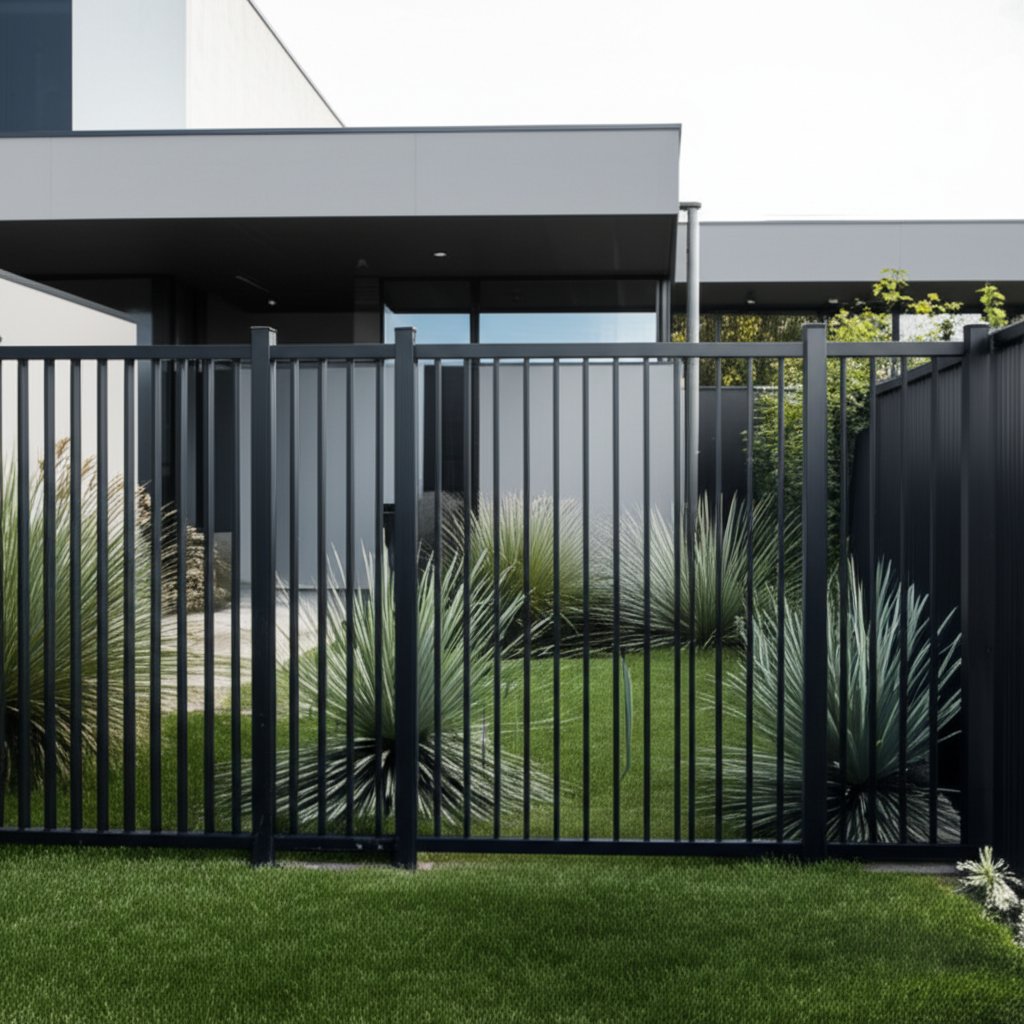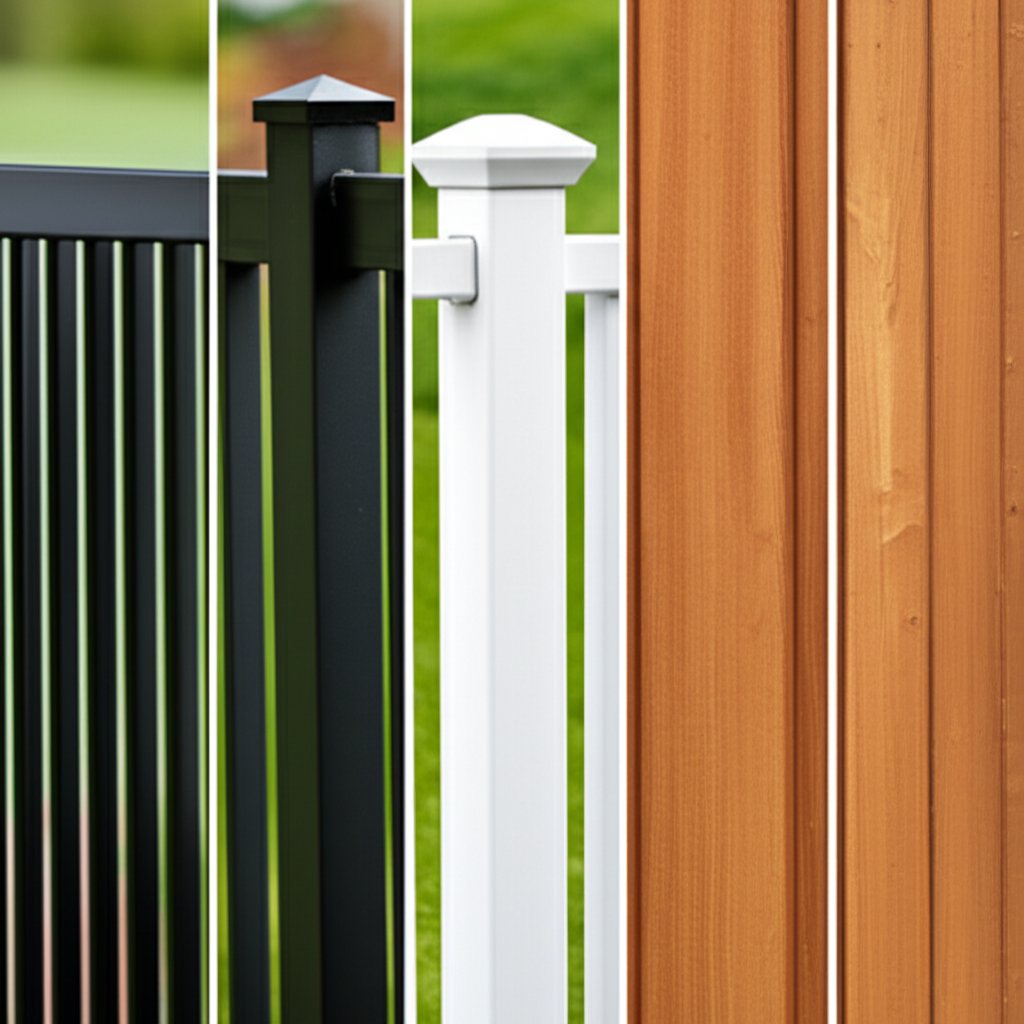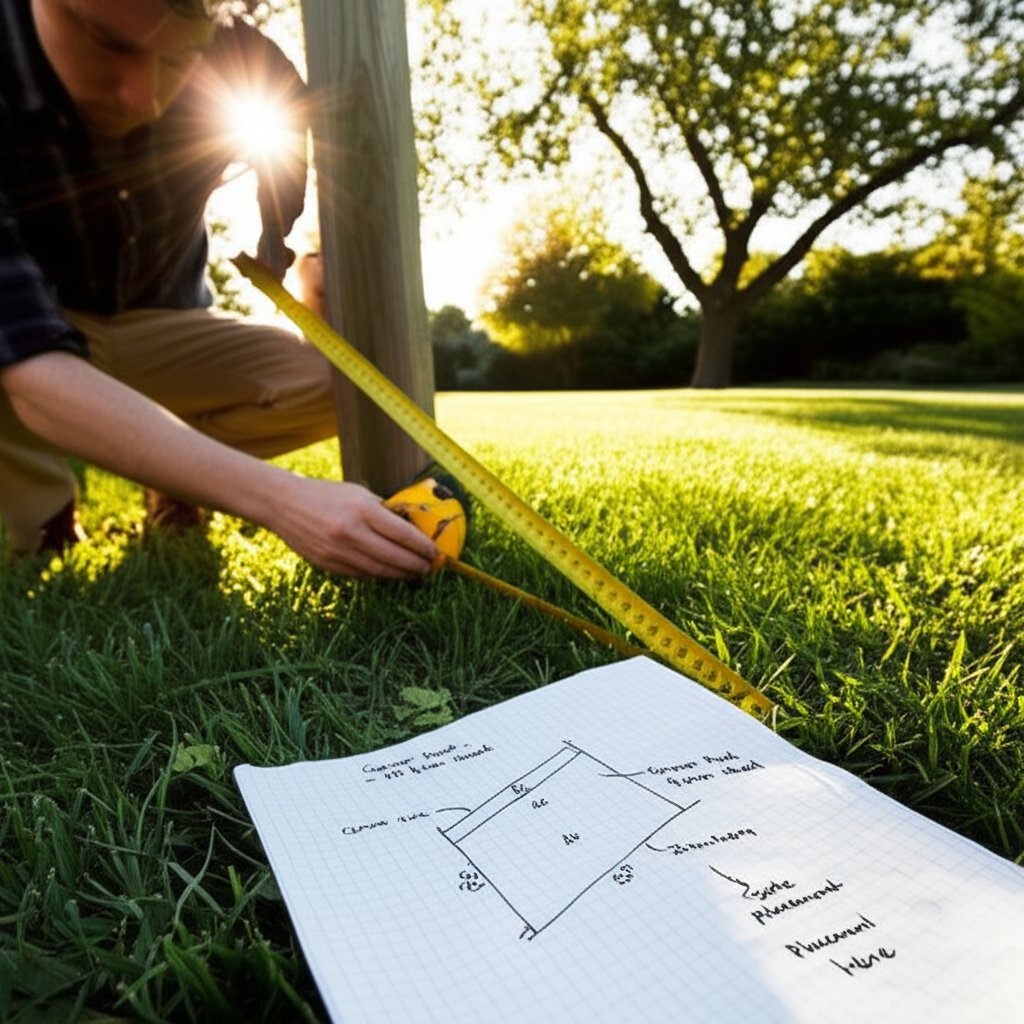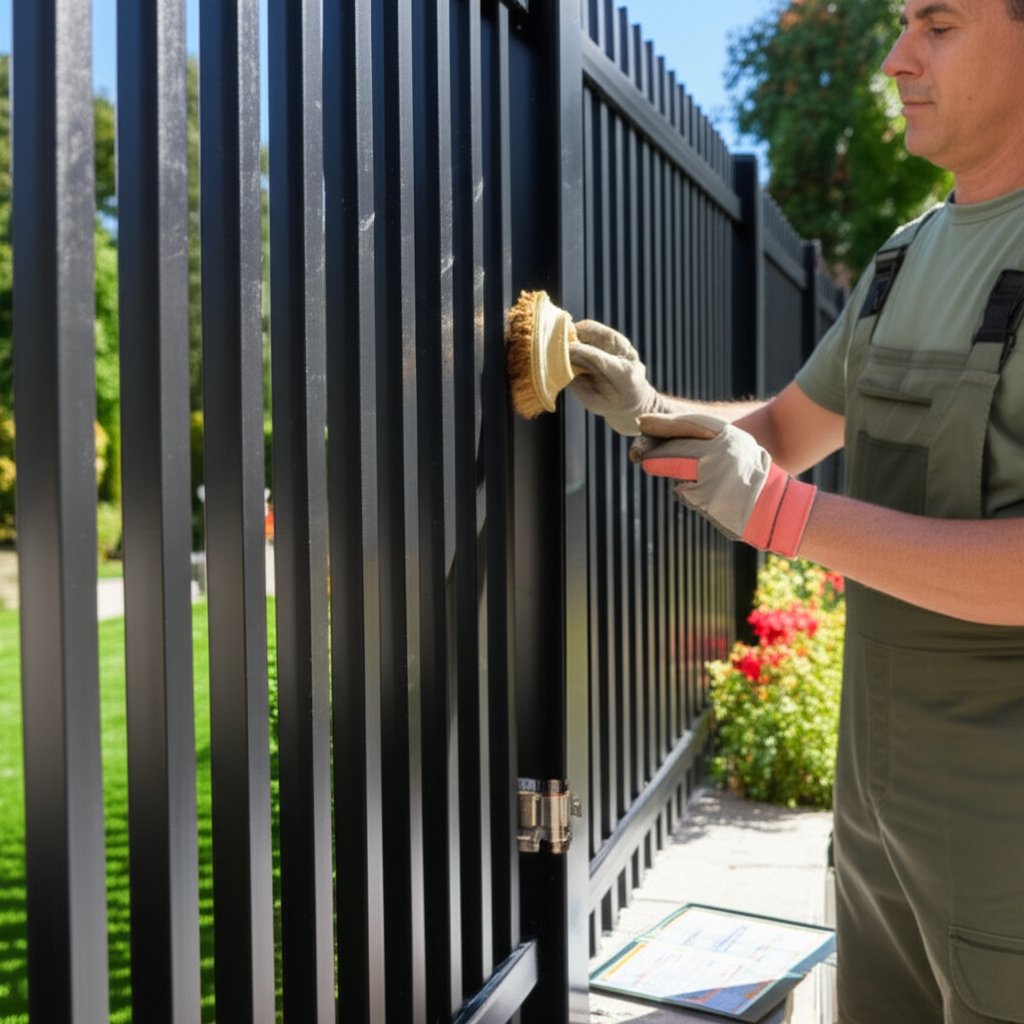
Ever looked at a fence and thought, "That’s exactly what my property needs"? If so, you’re not alone. As we step into 2025, the black aluminum fence continues to dominate both residential and commercial landscapes — and for good reason. Let’s break down what makes this fence style a smart, modern choice.
At its core, a black aluminum fence is constructed from lightweight, high-strength aluminum alloys, typically powder-coated in a rich black finish. This powder coating isn’t just about looks: it provides a durable barrier against rust, UV rays, scratches, and fading, ensuring your fence keeps its sharp appearance for years. Modern systems often use 6000-series alloys (such as 6063-T5), prized for their balance of strength and formability, making them ideal for intricate aluminum fence designs.
When you picture black aluminum fencing, do you imagine stately pickets or sleek, horizontal lines? Today’s aluminum fence styles offer something for everyone:
Finish matters too. Most reputable manufacturers use multi-stage cleaning and powder-coating processes, meeting AAMA 2604 or 2605 standards for superior weather resistance and color retention. Black finishes are especially popular because they blend with landscaping, highlight architectural details, and hide dirt and minor blemishes far better than lighter colors. In fact, black aluminum remains the most versatile color for both contemporary and traditional properties, easily adapting to evolving aluminum fence ideas.
| Height | Common Application |
|---|---|
| 4 foot aluminum fence | Front/side yards, pet containment |
| 5–6 feet | Security, privacy, HOA perimeters |
| 48–60 inches | Pool code-compliant barriers |
Imagine a fence that checks all the boxes: stylish, secure, and built to last. That’s why black aluminum fencing is showing up in so many places:
Whether you’re upgrading a classic brick home, adding security to a modern build, or designing a safe pool area, a black aluminum fence delivers style and substance. If you’re exploring more modern options, don’t miss this related guide on simple design fence gates and louvered aluminum fencing.
In summary, black aluminum fencing stands out in 2025 for its blend of durability, minimal maintenance, and design flexibility—making it a top pick for property owners who want both performance and curb appeal.

When you’re comparing fencing options, it’s easy to get overwhelmed by choices. Is an aluminum fence really worth the investment over wood, vinyl, or even a classic ornamental fence? Let’s break it down with real numbers and practical insights, so you can see how each material stacks up for cost, durability, and long-term value.
| Material | Installed Cost ($/lf) | Maintenance (hrs/yr) | Expected Lifespan (yrs) | Coating/Finish Standard | Strength | Recyclability (%) | Typical Warranty (yrs) |
|---|---|---|---|---|---|---|---|
| Aluminum | $35–$60 | 2–4 | 30–50 | AAMA 2604/2605 powder coat | Medium | ~100 | 10–20 (finish), 20–lifetime (structure) |
| Vinyl | $30–$55 | 2–3 | 20–30 | UV-resistant PVC | Medium | ~50 | 20–30 |
| Wood | $25–$45 | 8–12 | 10–20 | Paint/stain (annual) | Medium | ~50 (if untreated) | 1–5 |
| Steel | $50–$80 | 2–4 | 20–40 | Galvanized + powder coat | High | ~100 | 10–20 |
| Wrought Iron | $60–$120 | 4–8 | 25–50 | Paint (every 2–3 yrs) | Very High | ~100 | 10–20 |
As you’ll notice, aluminum fence pricing sits comfortably between vinyl and steel, with a much lower maintenance burden than wood or wrought iron. While wood offers a lower upfront cost, its shorter lifespan and high maintenance hours add up quickly over the years. Steel and wrought iron fence panels deliver maximum security but at a premium price and with more maintenance.
Imagine spending your weekends relaxing instead of sanding and painting. With aluminum, that’s the reality. Aluminum fences typically require just 2–4 hours of upkeep per year—mostly a quick rinse and hardware check. In contrast, wood fences demand regular staining, sealing, and repairs. Vinyl and aluminum are both low-maintenance, but vinyl can become brittle in extreme temperatures and may crack on impact.
Looking for a sustainable option? Aluminum and steel both shine—they’re nearly 100% recyclable at end of life. Wood is renewable, but only when sourced responsibly, and vinyl’s production has a higher carbon footprint. If environmental impact is a priority, aluminum offers a clear advantage, especially over vinyl and treated wood.
In summary, if you want a fence that balances cost, longevity, low maintenance, and sustainability, aluminum remains a top contender. Homeowners seeking a classic look might still opt for a white aluminum fence or traditional ornamental fence, but for most, modern aluminum delivers the best all-around value. Next, let’s look at how safety codes and permits affect your choice—especially for pools and shared boundaries.
When you picture a poolside retreat, compliance paperwork probably isn’t the first thing that comes to mind. But if you’re considering an aluminum pool fence or any black pool fence system, understanding safety codes is crucial—not just for peace of mind, but for legal protection and insurance. Sounds complex? Let’s break it down with the essentials every homeowner should know in 2025.
Why so many rules? Studies show that a properly installed black aluminum pool fence can reduce the risk of accidental drowning by up to 83%, making code compliance a literal lifesaver.
Imagine the peace of mind knowing your aluminum fence gate will always close and latch behind you—no accidental openings, no worries about wandering toddlers or pets. Compliance isn’t just about the fence; it’s about the gate hardware, too. Leading codes like BOCA, ICC, and ISPSC require:
Top-rated latches, such as those with magnetic or alarm features, are often recommended for maximum safety. If you’re planning a new install, ask your supplier for hardware that is specifically certified for pool code compliance.
Before you break ground, you’ll need to navigate local permitting and property line rules. Most municipalities—including those in Florida and across the US—require a permit for any new aluminum pool fence or significant replacement project. Here’s what you’ll need for your application:
Setbacks—how far your fence must be from property lines, sidewalks, or water bodies—vary by jurisdiction. Shared boundaries may require neighbor notification or even joint applications. Always check with your local authority having jurisdiction (AHJ) for the latest rules and required documents (reference).
Tip: Pool barrier codes and permitting rules can change, so always verify requirements with your local building department before purchasing any aluminum pool fencing system. Upfront diligence saves time, money, and headaches down the line.
By understanding these essential safety and compliance steps, you’ll ensure your black pool fence not only looks great but keeps your property—and your loved ones—secure. Next, let’s get practical: how do you measure your yard and budget for a code-compliant installation?

Wondering how to avoid costly miscalculations on your black aluminum fence project? It all starts with a careful measurement plan. Here’s a straightforward approach you can use for any property—flat or sloped, simple or complex.
| Segment Length (ft) | Slope Type | Panels Needed | Posts | Notes |
|---|---|---|---|---|
| 30 | Flat | 6 (5 ft panels) | 7 | Standard run |
| 40 | Gentle slope | 8 (5 ft panels, rackable) | 9 | Consider rackable panels |
| 20 | Steep slope | 4 (5 ft panels, stair-step) | 5 | May require stair-step install |
To estimate your material needs, sketch your property and break it into straight segments—account for corners, slopes, and gates. Divide each segment by your chosen aluminum fence panel width (commonly 5 to 8 feet). Always round up to ensure coverage. Don’t forget to add posts: one more than the number of panels per run, plus extra for corners and gate ends.
Let’s talk numbers. The cost to install aluminum fence systems can vary, but here are realistic 2025 benchmarks for black aluminum:
Premium options like aluminum privacy fence panels can push prices higher ($75–$130/lf installed), especially when you require added height or custom infill. Pool-compliant hardware and advanced powder coatings will also increase the aluminum fence price. For complex terrain or rocky soils, expect an additional $15–$20/lf in labor. Always add a 10–15% contingency to your budget for changes or unexpected site issues.
Let’s put it all together with sample budgets for three common project sizes (all using standard black panels and posts):
Remember, these figures are starting points. Custom features, privacy infill, premium coatings, or challenging terrain can shift totals upward. By taking time to measure accurately, plan for all gates and corners, and factor in local requirements, you’ll set your black aluminum fence project up for success—and avoid budget surprises.
Now that you have a realistic sense of scope and cost, the next step is to understand how to install your fence for lasting results. Let’s walk through a step-by-step installation plan that works for both DIYers and pros.
Ready to turn your plans into a real, lasting black aluminum fence? Whether you’re a weekend DIYer or a seasoned pro, a precise installation is key to years of trouble-free performance. Sounds complex? Not if you break it down step by step. Let’s walk through the process—covering layout, post setting, panel install, and those all-important final adjustments for aluminum fence gates and hardware.
Not all yards are perfectly flat. That’s where aluminum fencing panels—especially rackable fence panels—shine. Imagine a fence line that hugs your landscape, keeping pickets upright and gaps consistent. Typical rackable panels can adjust 4–6 inches per 6-foot section, but double or triple-punched panels can handle up to 16–36 inches for steep grades. When slopes are too sharp, stair-step your panels using taller posts and angle brackets for a professional look.
Gates are the most used—and stressed—part of any aluminum post fence. Take time to ensure proper alignment and hardware tension. Stainless steel or powder-coated hardware prevents rust, while adjustable self-closing hinges and latches ensure lasting, code-compliant performance. For best results, follow your aluminum fence kit instructions and always refer to manufacturer torque specs for brackets and hinges.
By following these steps and tips, you’ll achieve a secure, attractive black aluminum fence that stands the test of time. Next, we’ll explore how to source durable materials and evaluate manufacturers for your project’s long-term success.

Choosing the right supplier for your black aluminum fence isn’t just about price—it's about long-term reliability, code compliance, and peace of mind. But what actually sets apart a high-quality aluminum fence supplier from the rest? Let’s break it down with practical, real-world criteria you can use when shopping for aluminum fence panels wholesale or custom architectural profiles.
It’s easy to overlook the small details, but they’re critical for fence longevity. Imagine a fence that fades or chips after just a few seasons—that’s what you risk with subpar coatings or hardware. Here’s what to watch for:
With so many options, how do you choose the best aluminum fence manufacturers or an ornamental aluminum supplier for your project? Here’s a side-by-side comparison of leading options, including a top global source for custom and bulk orders:
| Manufacturer / Supplier | Alloy / Temper | Coating Standard | Custom Profiles | MOQ | Lead Time | Warranty (Years) | Certifications |
|---|---|---|---|---|---|---|---|
| Shengxin | 6063-T5, 6061-T6 | AAMA 2604/2605, anodizing, wood grain | Yes (architectural, fence, industrial) | Varies (project-based) | Typically 3–8 weeks (plus shipping) | Up to 20 (finish), lifetime (structure) | ISO, automotive, building industry |
| SLEEKFENCE | High-grade aluminum | Powder coat (AAMA rated) | Limited (panel size/color) | Stock/Custom order | 2–6 weeks | 15 (finish), limited lifetime (structure) | ASTM, ISO |
| Knotwood | 6063-T6 | Powder coat | Yes (slat size/orientation) | Stock/Custom | 2–6 weeks | 15 (finish), limited lifetime | ISO |
| Onguard | 6000 series | Powder coat | Standard panels/gates | Stock | 1–3 weeks | Limited lifetime | ASTM |
| Elite/Ultra | 6000 series | Powder coat | Standard panels/gates | Stock | 1–3 weeks | Limited lifetime | ASTM |
For homeowners and contractors seeking dependable supply and customization, Shengxin stands out among global aluminum fence manufacturers. They offer precise extrusion tolerances, finish options that meet or exceed AAMA 2604/2605, and substantial project support—ideal for those needing aluminum fence panels wholesale, custom aluminum fence parts, or even aluminum gates for sale in volume. However, keep in mind that minimum order quantities (MOQs) and international logistics require planning, so Shengxin is best suited for larger residential developments, commercial projects, or fence suppliers looking to stock up. For smaller projects or quick turnaround, domestic brands like SLEEKFENCE, Knotwood, or Onguard may be more practical.
As you review options, always ask about alloy specs, coating certificates, and warranty documentation. A reliable aluminum fence supplier or ornamental aluminum supplier will have no trouble providing these details. By sourcing the right materials and vetting your manufacturer, you’ll set the foundation for a black aluminum fence that’s built to last—and ready for anything your project demands.
Next, let’s see how these choices play out in real-world projects with case studies on costs, timelines, and key lessons learned.
Ever wondered how a black aluminum fence performs in real-life scenarios—across homes, pools, HOAs, and businesses? Let’s break it down with actual project examples, so you can picture what’s possible for your own property. Each case below highlights the scope, materials, installation details, costs, and key takeaways, using only verified industry data and real project experience.
Takeaway: Upgrading to a residential aluminum fence replaced high-maintenance wood and delivered instant curb appeal and security, with a seamless install thanks to rackable panels.
Takeaway: Meeting all pool safety codes up front prevented delays and future headaches—while the modern aluminum fence style enhanced the home’s ocean-facing deck.
Takeaway: For HOA and multi-family projects, choosing an aluminum fence and gates system with classic styling and robust hardware delivers lasting value and smooth approvals.
Takeaway: Commercial-grade aluminum fencing adapts to tough sites and delivers a secure, low-maintenance perimeter that enhances business curb appeal.
From residential backyards to commercial perimeters, black aluminum fencing and modern aluminum fence designs consistently deliver on durability, style, and ease of care. Next, let’s make sure your investment stays looking new—by planning for simple maintenance and troubleshooting.

When you invest in a black aluminum fence, you want it to look sharp and function safely for decades—not just a few seasons. Sounds complex? Not if you stick to a simple, proactive care plan. Imagine spending just a few hours a year to protect your investment and avoid costly repairs down the road. Here’s a quick-reference maintenance schedule that covers the essentials for any fencing aluminum black system:
| Task | Frequency | Minutes Required | Materials |
|---|---|---|---|
| Visual Inspection (posts, panels, hardware) | Spring & Fall | 20–30 | None |
| Wash Fence (remove dirt/grime) | 2x per year | 30–45 | pH-neutral soap, soft brush, hose |
| Lubricate Hinges & Latches | Spring | 10–15 | Silicone-safe lube |
| Check/Tighten Fasteners | Spring & Fall | 15 | Screwdriver/torque wrench |
| Touch-up Paint (if needed) | As needed | 15–30 | Manufacturer touch-up kit |
| Check Aluminum Fence Lighting (if installed) | Spring | 10 | Replacement bulbs/batteries |
Routine checks help you spot problems early—think loose black aluminum fence parts, chipped powder coating, or alignment issues that could lead to bigger headaches if ignored. For cleaning, always use pH-neutral soap and a soft brush to avoid damaging the finish. Harsh chemicals or abrasive pads can dull the powder coat and shorten the lifespan of your black aluminum panels.
What happens if a wayward soccer ball dents an aluminum fence picket, or you spot a scratch in the finish? Don’t panic—most issues are easy to fix with the right approach. Here’s a practical troubleshooting guide for the most common repairs:
For repairs beyond your skill level—such as major panel replacement or realignment—consider hiring a professional. Proper installation and repair techniques will extend the life of your fencing aluminum black system and maintain its warranty coverage.
Imagine discovering a finish defect or structural issue—would you know how to make a warranty claim? Most black aluminum fences come with robust warranties: 10–20 years for finish and 20 years to limited lifetime for structural integrity. To keep your coverage valid and streamline any future claims, document your maintenance and repairs. Here’s a template you can use:
Maintenance Log Template
Date | Task Performed | Parts Replaced | Notes
--- | --- | --- | ---
2025-03-15 | Washed fence, checked hardware | None | All panels secure
2025-09-10 | Lubricated hinges, touched up scratch | 1 picket | Used manufacturer paint
Warranty Claim Checklist
- Proof of purchase (invoice/receipt)
- Photos or videos of the issue
- Copy of maintenance log
- Written description of the problem
- Contact information for installer or manufacturer
Keep all records together—digital or paper—so you can quickly respond if a warranty issue arises. Review your warranty’s exclusions (such as improper installation or accidental damage) and follow the manufacturer’s claim process for the fastest resolution.
By following these simple steps, you’ll keep your black aluminum fence, black aluminum panels, and black aluminum post components looking and performing their best for years to come. Up next, we’ll help you score your options and make a confident, lasting decision for your property.
When you’re standing at the crossroads of fence selection, it’s easy to feel overwhelmed. Should you focus on budget, appearance, or low maintenance? Imagine if you could weigh all your priorities—cost, care, lifespan, style, security, and code compliance—in one simple chart. That’s exactly what this decision rubric does for you.
| Material | Cost | Maintenance | Longevity | Style | Security | Code Fit | Total (Max 30) |
|---|---|---|---|---|---|---|---|
| Black Aluminum Fences | 4 | 5 | 5 | 5 | 4 | 5 | 28 |
| Vinyl | 4 | 4 | 3 | 3 | 3 | 4 | 21 |
| Wood | 3 | 2 | 2 | 4 | 3 | 3 | 17 |
| Steel | 3 | 3 | 4 | 3 | 5 | 4 | 22 |
| Wrought Iron | 2 | 2 | 4 | 5 | 5 | 4 | 22 |
Notice how black aluminum fences lead the pack? That’s no accident. They consistently deliver the best balance of value, curb appeal, and ease of ownership. If you’re picturing a classic yard, a pool, or even a commercial entry, a black aluminum fence 6ft tall can check every box—especially when compared to the options at your local home depot aluminum fence or lowes aluminum fence aisle. You’ll get the style flexibility of wood or wrought iron, but with a fraction of the upkeep and a much longer service life.
Aluminium fencing is also a top choice for those who want a modern look without the hassle of frequent repairs or repainting. And if you ever search for aluminum fence near me, you’ll notice that black aluminum is almost always the recommended upgrade for lasting value and neighborhood appeal.
Ready to move forward? Here’s a step-by-step checklist to ensure your aluminum gate fence project goes smoothly from start to finish:
For most homeowners, black aluminum fences offer unbeatable ROI, low maintenance, and enduring style. If your site demands extra security—think high-traffic commercial zones or properties at risk for impact—steel or wrought iron may be worth the added investment.
Need custom architectural profiles, bulk supply for aluminum fences, or a reliable partner for aluminum gate fence systems? Explore aluminum extrusion profiles China by Shengxin, a leading manufacturer focused on quality and project support. Remember, Shengxin is a materials partner—not a retail installer—making them ideal for larger or specialized projects.
In the end, choosing the right fence is about more than just material—it’s about finding a solution that fits your life, your property, and your peace of mind for years to come.
Black aluminum fencing offers superior corrosion resistance, requires minimal maintenance, and is highly durable thanks to powder-coated finishes that resist fading and chipping. Unlike wood, it does not rot or need yearly staining, and compared to vinyl, it maintains its strength and appearance in all climates. Its recyclable nature also makes it an eco-friendly choice.
To meet pool safety codes, your black aluminum pool fence should be at least 48–60 inches tall, have picket spacing under 4 inches, and a bottom gap no greater than 2 inches. Gates must be self-closing and self-latching with the latch at least 54 inches from the ground, and swing away from the pool. Always verify local requirements before installation.
Budgeting for a black aluminum fence involves measuring your property accurately, accounting for slopes and gates, and considering both material and installation costs. In 2025, expect material-only costs of $20–$45 per linear foot and installed costs of $35–$60 per linear foot. Add for gates, permits, and a 10–15% contingency for unforeseen expenses.
Maintain your black aluminum fence by washing it twice a year with pH-neutral soap, inspecting for loose hardware, lubricating hinges annually, and touching up scratches with manufacturer-approved paint. Document maintenance and repairs to support any warranty claims and ensure long-term performance.
Select a supplier who uses 6000-series aluminum alloys, meets AAMA 2604/2605 powder-coating standards, and provides clear warranty terms. For large or custom projects, consider established manufacturers like Shengxin, which offer custom profiles, quality control, and project support. Always confirm extrusion standards, finish options, and minimum order quantities.
 Onlineservice
Onlineservice 0086 136 3563 2360
0086 136 3563 2360 sales@sxalu.com
sales@sxalu.com +86 136 3563 2360
+86 136 3563 2360